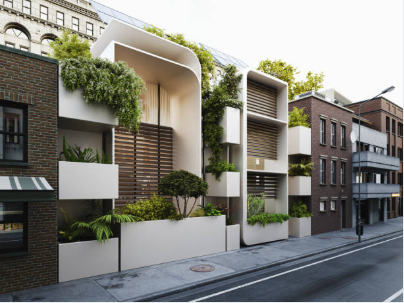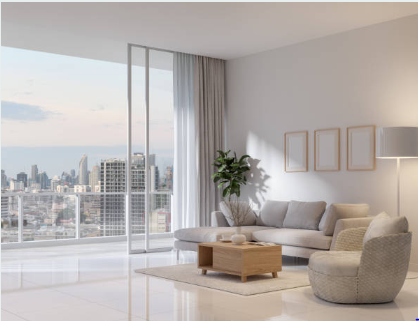Qatar's real estate sector has been a vital contributor to its economic growth in recent years. A surplus in real estate resources often defines the Qatari real estate market. However, a growing country's economy and population would help set things right in the short to long term. The FIFA World Cup in 2022 is expected to increase tourism and stimulate industry even more. Many people can still count on taking advantage of the chances that lower property prices bring. Let's discuss some of the Real Estate Trends in Qatar and the Sunbelt.
Urban Development Trends in Qatar Construction Style
The growth of the real estate market in Qatar has regularly monitored the former history of the country. After the discovery of oil in 1939, significant urban development started. In the 1950s, the development of the transportation network resulted in the construction of the first automobiles, and mid-rise apartment buildings started to replace the traditionally built homes. The Ministry of Municipal Affairs and Agriculture was established in the nation when it gained independence from the UK in 1971.
It developed a master plan to create a contemporary urban skyline. Even though towers occupy Qatar's skyline today, the first structures with more than 10 floors did not show up on the peninsula until the 1980s. Qatar had built many structures that were above 100 m in height by the late 1990s.
Population Influx Increased Properties
Population influx has supported the real estate industry, as the population increased from 47,000 in 1960 to 2.7 million by the end of 2018. The UN predicts that by 2030, there will be 3.2 million people living there, and this rapid population expansion has sped up real estate expansion. The dwelling units are mainly located in Doha and the adjacent Al Rayyan, with another 11% in the towns of Al Wakrah, Al Khor, and Umm Salal.
The remaining 4% is spread out over the remainder of the nation. This resulted in 313,889 residential units, including 105,976 villas and 141,324 apartment buildings.
Major Developments
Developments are still adding to the supply of homes and businesses. The FIFA World Cup 2022 is being played in Lusail Stadium, which will serve as one of the tournament's key elements. The 38-square-kilometer residential city is the centerpiece project of Qatari Diar, the Qatar Investment Authority's real estate arm (QIA). Around 200,000 people will live permanently on residential islands, and more than 170,000 will work in 19 mixed-use areas, including a new financial hub and entertainment and energy cities.
Architects embodied the Qatar National Vision 2030's real estate components through sustainable and eco-friendly solutions.
The Msheireb Downtown Doha project is anticipated to revitalize the old marketplace in the heart of Doha on the other side of West Bay by building homes, businesses, hotels, and monuments. Msheireb Properties, a division of the Qatar Foundation devoted to education, research, and community engagement, is in charge of the project's design. The project is regarded as the first sustainable downtown redevelopment project, with a budget of QR20 billion ($5.5 billion). Qatar also has a strong portfolio outside of its boundaries.
Residential Real Estate Development
An increase in supply in the residential sector remains a major obstacle despite progressive trends. An additional 7000 units were added to the nation's housing stock in the year's first half, based on a 2018 quarterly report from professional services and auditing firm KPMG. Of these, 65% were flats, with villas and compound units. According to real estate consulting firm DTZ Qatar, demand was still modest in the second half of 2018. Still, it was anticipated to increase nearer to the FIFA World Cup in 2022.
The DTZ Qatar research indicates that rental prices were generally steady in the third quarter of 2018; nevertheless, this was after a fall of 10-15% the year before. Individuals shop around for good deals, and certain property owners in select locations often give a month's free rent to entice tenants. The decline in pricing increased leasing activity. Oversupply has resulted in an increase in activity concerning home sales.
Despite downward pressure on property values, there was a 9% increase in transactions in July and August 2018 compared to the same time the year before. This resulted in a 3% overall gain in the worth of residential properties. The current residential market is very demanding, with many developing projects under construction.
Property Finding: Qatar's Real Estate Rental Market Has More Demand
The research offers significant market insights, demonstrating how a lack of supply has caused price strolls in all areas and units. Doha saw a 23% year-over-year increase in rental unit prices, while Al Khor saw a 38% YoY increase. Due to Qatar's impending hosting of the 2022 FIFA World Cup, there has been a change in rental demand.
According to the analysis, the price increases are only likely to last a short time because, in 2023, demand is predicted to decline. It will lead to a more stable price index for rental properties. Nowadays, there is a growing need for apartments, especially short-term and serviced apartments.
"With Qatar about to host one of the world's most popular sporting events, investors and first-time buyers are now more confident in investing in the market. The Ministry of Justice is also taking the necessary steps to create a more transparent market, which will open the doors for further investments shortly."
Commented Afaf Hashim, Country Manager at Property Finder Qatar.
On the website of Saakin Qatar, the number of sales listings for Doha in 2022 increased by 14%, which led to an increase in the projected average price per square meter of 27%. During the same time period, Lusail's sales listings increased by 7% per square meter. According to the report, Qatar's sales market resumes attaining traction, with the Ministry of Justice's Quarterly Real Estate Bulletin citing 1,251 property sale transactions during Q1 2022.
The report attributes the sales demand to Qatar's new foreign property ownership. The investment rules and their benefits, and an expansion in the regions foreigners are now allowed to invest in.
Commercial Development
The excess of offices in Doha presents similar issues to the residential market. According to KPMG, the capital city had over 4.6 million square meters of gross leasable office space as of the first half of 2018, with an additional 410,000 square meters anticipated to be supplied by the end of 2019. Commercial office supply exceeds demand, forcing proprietors to provide rent-free periods of up to six months in order to entice tenants. In 2018, relocations accounted for the great majority of new leases.
As businesses attempted to take advantage of the lower costs to streamline their presence, locate lower rents, and renovate existing facilities.
The primary commercial area of Doha is still West Bay, which makes up 30% of the city's purpose-built office space and measures about 1.7 million square meters. The Marina District of Lusail City is where the majority of new supplies were scheduled, while relocations to the Msheireb Downtown Doha neighborhood are also anticipated. As of June 2018, the average monthly rent for offices in the West Bay region was about QR150 ($41) per square meter.
The latest commercial development is progressive, with many commercial properties, towers, and projects.
Retail
In Qatar, shopping malls play a significant role in both business and social activity. According to DTZ Qatar, the retail market experienced full occupancy and an increase in rent during the preceding 2016. But as of the third quarter of 2018, there were 1.4 million square meters of excellent rentable retail space, up from 600,000 square meters in 2015.
Six shopping centers opened during that period, and consumer spending was falling. These elements have produced a situation where rents are dropping, and vacancy rates are rising.
Now there's significant development in the retail industry.
Hospitality
The National Tourism Sector Strategy 2030 aims to increase the number of foreign visitors from 2022 to 2023. However, there were 944,689 tourists to the nation in the first half of 2018, a 35% year-over-year fall; arrivals from the GCC were down 84%, partly due to political unrest. This slowly promoted the Qatar Tourism Agency's initiatives to engage with new source markets. Qatar offers the best hotels and short-term apartment rentals with outclass services. The hospitality sector has been developed much to entertain foreign visitors.
The Rental Landscape for Apartments
Rent prices rose in 2022 all around Qatar, while the number of listings on Saakin Qatar's platform significantly fluctuated, impacting advertised baseline pricing. Apartments are now being offered in West Bay Lagoon, a neighborhood formerly dominated by villas; in 2022, apartment listings increased by 45%. In contrast, listings for the Old Airport Road neighborhood more than doubled.
Due to new, more expensive stock arrivals, Hilal and Al Rayyan localities saw price increases of 3,325 QAR to 4,500 QAR and 6,500 QAR to 9,000 QAR, respectively. Due to the increasing demand for Lusail, the Marina District had some of the largest price rises (from 9,000 QAR to 12,750 QAR). However, prices on Corniche Road and Fereej Bin Mahmoud witnessed a little decline over the same time period.
The Rental Landscape for Villas
The prices in Al Aziziyah, Al Maamoura, and Umm Salal Mohammad are experiencing the largest increases due to new, more expensive stock hitting the market. In Qatar, villas remain famous for renters, with earlier price drops encouraging occupancy. Abu Hamour's inventory is still rising, with listings increasing by 85%. There has been an increase in villas in Al Hilal, where prices increased by 75% over the comparison period.
The Sales Landscape in Apartments and other Properties
Apartment investments reach an all-time high—property sales listings wave with a noticeable change during 2022. The latest Qatar Real Estate Market Trends identified a significant rise in rental demand during 2022, with more supply for the first time; after that, investments in apartments reached an all-time high.
Lusail is quickly evolving into one of the top choice areas for investment. "Even though the market has not been able to find a steady price trend for apartments for sale, transactions continue to increase, especially as investments continue to reach an all-time high across Qatar's various markets," states the report.
The Sales Landscape in Villas and other Properties
West Bay villa listings increased by 87%, demonstrating the new property. Ain Khaled's listings increased by 47% within the same time frame. Due to enhanced pricing clarity brought about by financial rules led by the Ministry of Justice. Villa prices have continued to vary. Due to a threefold increase in listings, the advertised median price for villas in Al Kheesa rose from 6,917 QAR to 7,619 QAR per square meter over the same period.
As a result of the increased supply of villas, Lusail City also saw an increase in the advertised media price, which increased from 10,865 QAR to 15,625 QAR per square meter during the same period.
Final Words
The term "real estate investment" refers to homes and other buildings explicitly made for living by people or investment types. The research provides valuable insights into Qatar's residential and commercial real estate industry as well. It focuses on market aspects while covering technology advancements, trends, and government activities in this field. Furthermore, portraits of effective participants portray the business advantage of the real estate market.
The market is divided into categories in the research according to property type (apartments, landed houses, and villas). The research provides market estimates and forecasts for each Qatar real estate market category. Thus there has been a remarkable positive change in the real estate industry in Qatar over the years.
FAQ
Who are the key players in Qatar Residential Real Estate Market?
- Al Asmakh Real Estate
- Al Mana Real Estate
- United Development Company
- Qatari Diar Real Estate Company
- Ezdan Holding Group
- Barwa Real Estate
Is hospitality developed in Qatar?
The National Tourism Sector Strategy 2030 aims to increase the number of foreign visitors from 2022 to 2023. However, there were 944,689 tourists to the nation in the first half of 2018, a 35% year-over-year fall; arrivals from the GCC were down 84%, partly due to political unrest. This slowly promoted the Qatar Tourism Agency's initiatives to engage with new source markets.
Read More: Trends to Grow Qatar's Investor-Friendly Real Estate Market
Comments
No comments yet.
























